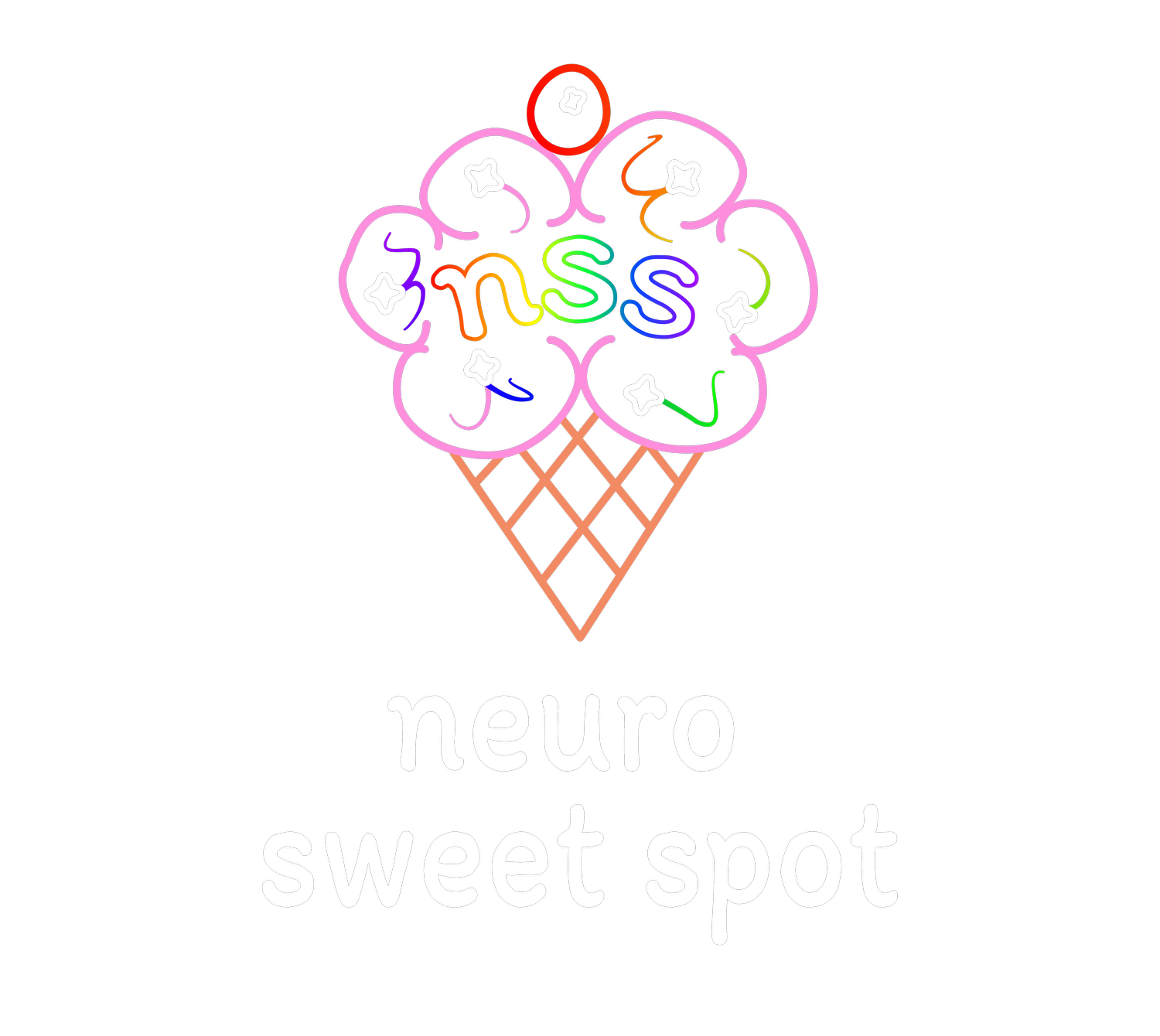
Education and Tangible Resources:
Dive Into Insights and Tips
Discover Your Brain. Discover You.
Clarity brings confidence as you find your Neuro Sweet Spot.
Fight, Flight, Freeze, Fawn: Understanding Your Body’s Emergency Mode
Ever felt your heart race when something startles you? Or maybe you freeze when you need to speak up? That’s your Sympathetic Nervous System (SNS) kicking in—your body’s built-in emergency response team. It’s designed to keep you alive, whether by fighting, running, shutting down, or people-pleasing to stay safe.
But here’s the thing: this system was never meant to be running all the time. It’s supposed to activate in short bursts when there’s a real threat, then hand the controls back over to the “Rest & Digest” system—the Parasympathetic Nervous System (PNS).
Let’s break it down, Neuro Spicy style.
The Body’s Alarm System: Fight, Flight, Freeze, Fawn
Your Sympathetic Nervous System (SNS) is like an overprotective security guard. When it senses danger (real or perceived), it floods your body with adrenaline and cortisol, triggering:
• Fight – You get aggressive, irritable, or ready to argue.
• Flight – Your brain says, “Nope!” and wants to escape.
• Freeze – You shut down, feel stuck, or go blank.
• Fawn – You people-please to keep things “safe.”
These reactions aren’t choices. They’re automatic survival responses.
When the Alarm Won’t Shut Off
The problem? Your nervous system can’t tell the difference between an actual bear attack and a stressful email. So, if you’re constantly overstimulated, anxious, or in a high-stress environment, your SNS stays stuck ON. This leads to chronic stress, burnout, digestive issues, and exhaustion.
And if you’re neurodivergent? Your brain might be extra sensitive to threats, meaning you can get thrown into survival mode more easily.
Here’s where the Parasympathetic Nervous System (PNS) comes in.
The Reset Button: Rest & Digest
Your PNS is your built-in recovery system. When it’s in control, your body can heal, digest, and relax. Instead of running on stress hormones, your nervous system says,
“Hey, you’re safe now. Let’s chill.”
The vagus nerve is the MVP here. It’s the longest nerve in your body, running from your brainstem down through your gut. It’s the on switch for the PNS. When activated, it tells your heart rate to slow down, your digestion to kick in, and your brain to stop scanning for threats.
The catch? You have to manually flip the switch.
Your Brain Isn’t Fully Online Until 25
Fun fact: The prefrontal cortex (PFC), which helps regulate emotions, isn’t fully developed until your mid-20s. This means before then, your SNS might overreact more often. If you’ve ever wondered why you made impulsive, emotional, or anxiety-driven choices when you were younger—this is why.
The good news? You can train your nervous system to respond differently, no matter your age.
How to Activate Rest & Digest (Tools You Can Actually Use)
Your nervous system listens to your body more than your thoughts. Here’s how to manually hit the “off” switch on survival mode:
Vagus Nerve Triggers (Instant Calm Buttons)
1. Belly Breathing – Breathe in through your nose for 4, hold for 4, and breathe out through your mouth for 8. The long exhale signals safety.
2. Humming or Singing – Vibrations activate the vagus nerve.
3. Cold Water Splash – Shocks the nervous system into a reset.
4. Gargling – Weird, but effective. The muscles used stimulate the vagus nerve.
5. Slow, Gentle Rocking – Mimics the soothing effects of being held.
Daily Practices to Strengthen Your Parasympathetic Response
• Grounding Exercises – Touch something textured, focus on your feet, or walk barefoot.
• Body Scanning – Close your eyes, check in with each body part.
• Chewing Slower – Engages digestion, signaling safety.
• Laughter & Social Connection – Releases feel-good chemicals and calms the nervous system.
Final Thought: Your Nervous System is Trainable
If you feel stuck in fight, flight, freeze, or fawn, it’s not your fault. Your body is doing what it was designed to do—keep you safe. But you can teach it to feel safe in the present moment again.
Your vagus nerve is the key, and simple things like breathing, humming, and movement can help flip the switch back to balance.
And remember: It’s not about never feeling stress. It’s about helping your body remember that it’s safe to come back down.

